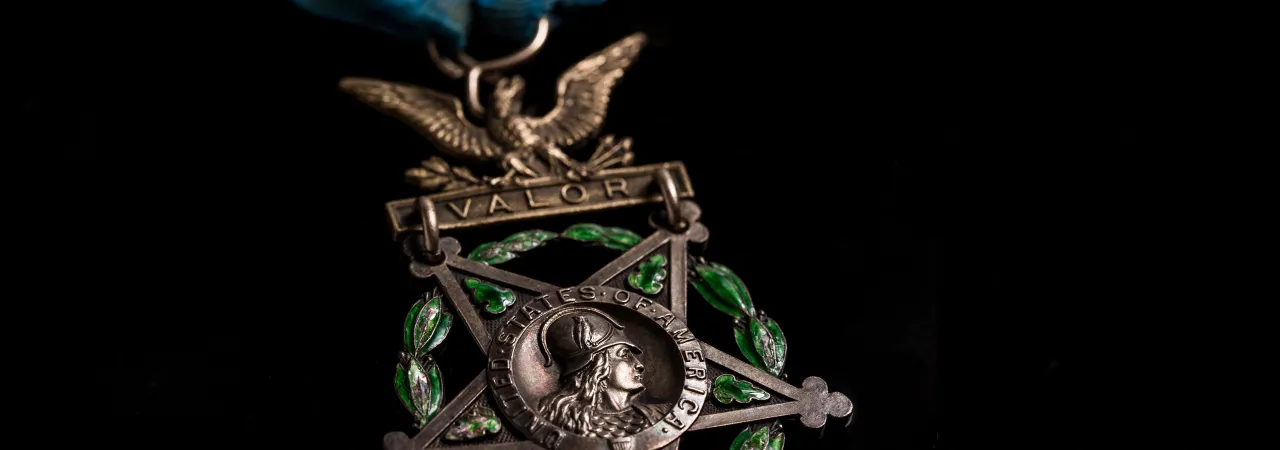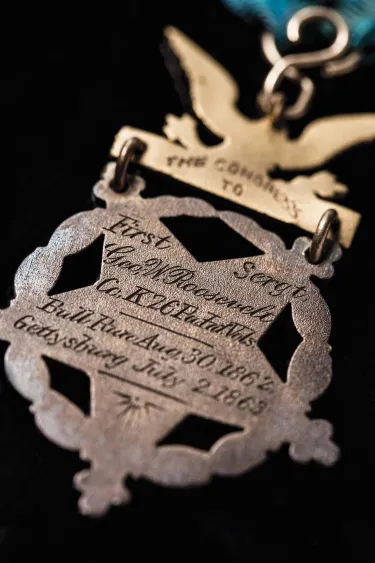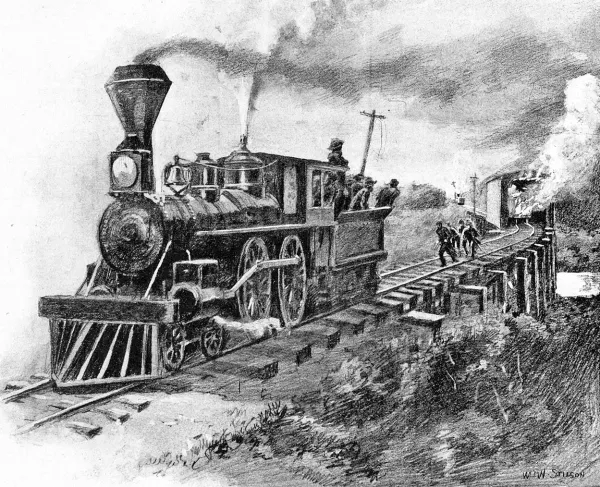Designing the Medal of Honor

Since the award was instituted in 1863, the design of the Medal of Honor has gone through several iterations. Some changes have been minor, others significant, particularly the shift from a pin to a neck ribbon. Moreover, the different service branches have all developed their particular flourishes to distinguish their medals at a glance.
The Navy Medal of Honor, the first award authorized, has remained virtually unchanged since its design was adopted in 1862. Initial work was done by the Philadelphia Mint, at the request of Secretary of the Navy Gideon Welles and under the supervision of Director James Pollock. The Philadelphia firm of William Wilson & Sons provided the attachments and boxes for the Medals.
Original medals were suspended from a flag-like red, white and blue ribbon that could be pinned to the breast of the recipient by an anchor wrapped with a length of rope. The design featured a ring of 34 stars and an illustration of the Roman goddess of war, Minerva, dispelling the figure of Discord. The reverse was inscribed with the words “Personal Valor” and featured an open area where the recipient’s information would be engraved.

Army Medals of Honor dating to the Civil War and other conflicts of the 19th century were struck from the same die as the Navy medal, meaning that there were only minor differences. The first was in the area connecting the medal to its ribbon, where an eagle with a saber in its talons atop crossed cannons stood in place of the anchor. The bar that held the pin on the back was also made more elaborate for the Army version. Finally, the reverse included the additional engraving “The Congress To” above where the recipient’s information would be added.
The first significant design change to the Army award occurred in 1896, the same year that Congress authorized a rosette that could be worn in place of the Medal. In an attempt to distinguish the Medal of Honor from less formal decorations that were given out by Civil War veterans’ organizations, the ribbon was changed significantly, although its color scheme remained the same. Earlier recipients were also eligible to receive the newly designed ribbon as a replacement.

However, concerns about the similarities to more common medals persisted, and several Civil War-era recipients now in positions of power, including Brig. Gen. George Gillespie and U.S. Ambassador to France Horace Porter, spearheaded an effort to revamp the design more significantly. Porter arranged for the Paris firm of Messrs. Arthur, Bertrand, and Berenger to create a new design that kept the star shape but modified the face of the Medal. It was approved in 1904 and promptly trademarked by Gillespie to safeguard the likeness from imitation.
The so-called Gillespie Medal replaced the detailed face design with a portrait of the goddess Minerva in a war helm. The oak leaf clusters on the star’s points became dark green enamel, and a wreath of the same material was added around the outer edge. The eagle on the connector became perched on a bar reading “Valor” and its cargo shifted to become an olive branch and a clutch of arrows. The ribbon was shifted to today’s familiar bluebird color, embroidered with 13 stars. The reverse of the Medal itself was left entirely blank, ready for the recipient’s details; the words “The Congress To” had shifted onto the bar.

In 1886, the Navy Medal had received its first minor update, when the anchor connecting Medal to ribbon lost its encircling rope. In 1913, the ribbon itself was shifted to the same blue as the Army award. In 1919, in order to distinguish Navy Medals awarded for combat versus noncombat heroism, a design utilizing a Maltese Cross in place of the star was instituted for the former category. Although designed and produced by the famous Tiffany and Co., it was not popular and was officially retired in 1942.
Until World War II, the medal was often worn pinned to the breast of recipients, although it was sometimes pinned at the neck or attached to a neck ribbon. But in 1942, the Navy universally adopted a neck ribbon to further distinguish the Medal of Honor from other decorations — it is the only American military award to be worn in this way. The Army followed suit in 1944, with both versions utilizing an eight-sided pad embroidered with 13 stars to attach the Medal to the neck ribbon.
In 1965, a version of the Medal of Honor specific to the U.S. Air Force came into effect, meaning members of that service no longer received the Army design. The new medal replaced Minerva with an image of the Statue of Liberty, but retained the 34 stars that represent the 34 states at the time of the Medal of Honor’s institution during the Civil War.





